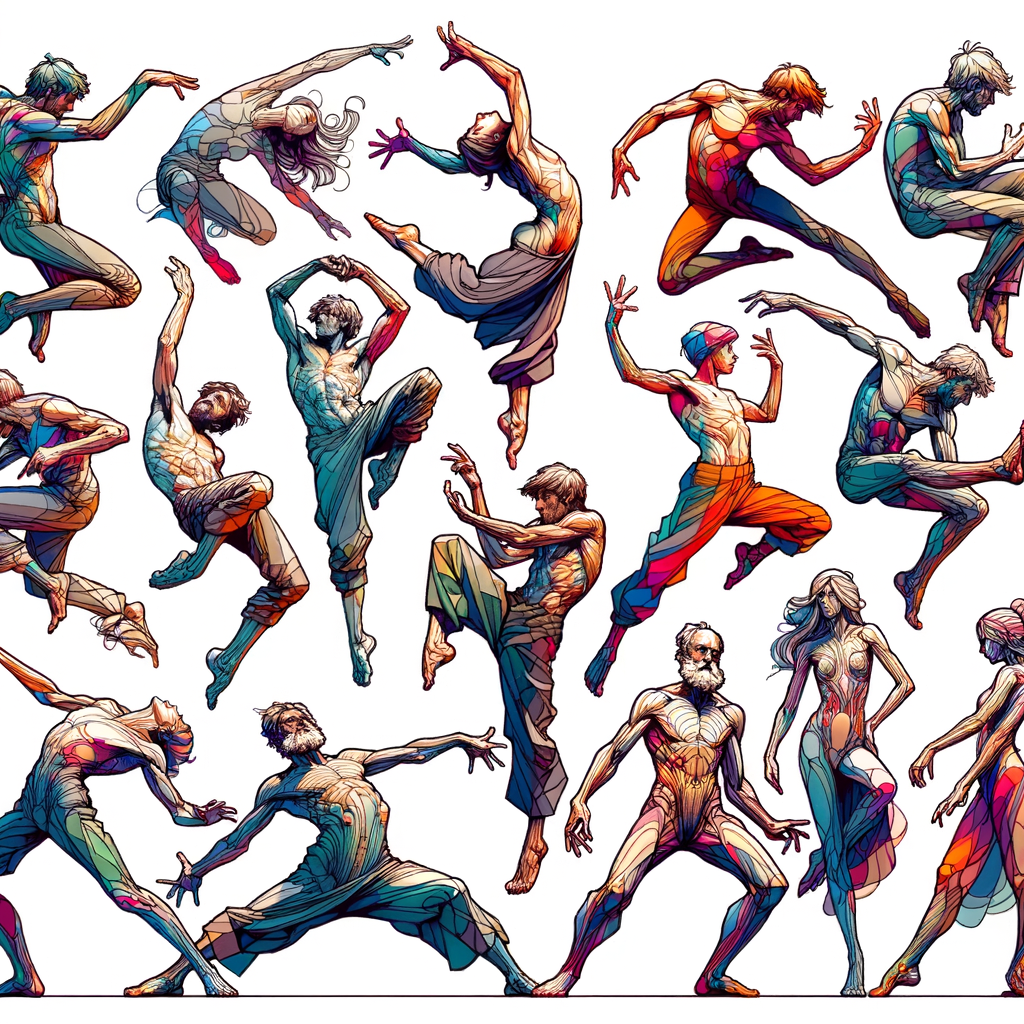
Creating dynamic characters is an essential skill for artists looking to bring their creations to life. In this expansive guide, we'll delve into the principles of anatomy and movement, offering practical tips and techniques that will help you design characters that not only look good but also convey emotion and action. Whether you're a beginner or a seasoned artist, understanding how to depict movement and anatomy effectively will enhance your artistic repertoire and bring your illustrations to a whole new level.
Dynamic characters are those that seem full of life and motion. Mastering the creation of such characters requires a deep understanding of human and animal anatomy, as well as the principles driving movement. In this article, we'll explore the fundamentals of anatomy and delve into various movement techniques that every artist should know. By the end of this guide, you will be equipped with the tools necessary to create not just characters, but characters that have a story to tell.
Understanding Anatomy
Anatomy is the study of the structure of living things. For artists, a foundational knowledge of anatomy—including muscles, bones, and proportions—is crucial for creating believable characters. Before diving into character design, it’s essential to take the time to study the human form.
1. **Study the Basics**: Start with the proportions of the human body. An average adult human is typically about 7 to 8 heads tall. Pay attention to how different body types (such as tall, short, muscular, or lean) affect proportional relationships.
2. **Break Down the Body**: It often helps to break down the body into basic shapes. The head can be represented as a circle, the torso as a rectangle, and limbs as cylinders. This simplification aids in capturing the essence of movement.
3. **Learn Muscle Structures**: Understanding where muscles are located and how they interact is vital. Muscles contract and elongate in response to movement, and knowing this will allow you to depict realistic poses. Reference anatomy books or online tutorials focusing on musculature.
4. **Practice Using Reference**: Whether it's photos of a model or anatomical drawings, always have references on hand when drawing. Life drawing sessions can also improve your understanding of the human form. Observing real-life interaction can inform your practice.
Exploring Movement
Movement is integral to creating dynamic characters. Without understanding how movements occur, characters can appear stiff or lifeless. The following principles can enhance the way you depict movement in your illustrations:
1. **The Lines of Action**: Start your character designs with a strong line of action. This line represents the main movement and direction of your character, creating a visual flow. Sketching the pose first with this approach allows you to capture energy and motion.
2. **Exaggeration**: It’s essential to push the limits when creating poses. Slightly exaggerated features can give your characters more life and expression. Think about how far a character would lean or stretch in a specific pose and accentuate it in a creative way.
3. **Foreshortening**: This technique refers to the distortion of an object or figure that is closer to the viewer. Understanding foreshortening can greatly enhance the perception of depth in your characters. Practice drawing limbs from different angles and observe how they appear shorter or more compressed based on the perspective.
4. **Weight and Balance**: Every action has a counteraction. Characters need to feel balanced and weighted while in motion. Understanding how weight shifts during movement can help you depict it accurately. For example, during a jump, as the character lifts off the ground, their center of gravity shifts.
Application in Digital Art
When creating dynamic characters, especially in a digital medium, the tools available can support your anatomy and movement studies. Software like Photoshop, Procreate, or Clip Studio Paint offers layers and tools to adjust and animate your characters. Here's how to efficiently use these tools:
1. **Layering Technique**: Use multiple layers to separate your sketch, line art, and colors. This allows you to adjust poses without compromising your final artwork.
2. **Sketching Your Base**: Start with a rough sketch first, focusing on the line of action and overall proportions. Once you’re satisfied, create a new layer for the cleaner lines and another one for coloring.
3. **Utilize Brushes and Textures**: Explore different brushes to create varied lines and textures to give your characters depth. Using textured brushes can simulate the feel of real-life media.
4. **Animation Techniques**: If you want to take it a step further, consider basic animation. Software like Adobe Animate or After Effects allows you to source illustrations and animate them. Create simple movements, like a character waving or running, to see how anatomy and movement play a role in transitioning from one pose to another.
Practicing Dynamic Characters
The only way to truly master dynamic character design is through practice. Here are some exercises to improve your skills:
1. **Daily Poses**: Set a daily challenge to sketch poses in various angles. Focus on different actions—running, jumping, sitting, etc.
2. **Character Zines**: Create a small zine featuring different poses of a single character, showcasing their action capabilities. This exercise emphasizes consistency in design while exploring dynamic poses.
3. **Action Scenes**: Design a comic strip or storyboard. Illustrate characters in action, focusing on the interaction between them. This exercise can enhance your storytelling ability alongside artistic skills.
4. **Feedback Loop**: Share your work with fellow artists for constructive criticism. Engaging with a community can provide unique perspectives and improvement insights.
Conclusion
In conclusion, mastering the art of creating dynamic characters is a mix of understanding anatomy and applying movement principles. Don't rush your learning process; take the time to observe, sketch, and innovate. Every great artist started as a beginner, so stay patient, keep practicing, and allow your style to evolve naturally. As you dive deeper into the world of character design, remember to celebrate your progress and creativity. With persistence and dedication, the dynamic possibilities for your characters are limitless. Happy creating!

